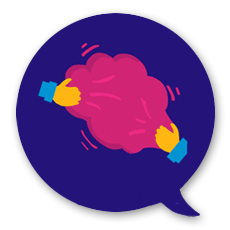Severity: Warning
Message: session_start(): Failed to initialize storage module: user (path: /var/www/session)
Filename: Session/Session.php
Line Number: 143

Our plastic brains can be bent and reshaped as we learn and make new memories. But that mesh of neurons needs to be challenged if it is to be a fit and effective reorganizer. Thankfully you don’t need to train for Mastermind or outdo your local chess grandmaster. Everyday activities count as “brain workouts” and will give the brain a head start in its ability to rejig connections when need be. You will need to push yourself beyond your comfort limits – no pain, no gain – but brain boot camp can still be pleasant. You could do crosswords over coffee, read a good book, travel to new places or interact socially; physical activities similarly act as brain fertilizer, stimulating brain cells (neurons) to grow new branches and connections.
To find out how keeping active is good for your brain health, watch this film made by our friends at freedemliving.com
A newborn baby is deluged with new information, but its immature brain is primed for this moment, with billions of these neurons on standby. They already bristle with a tree-top of branches called synapses, each neuron in your gray matter sprouting out about 2,500. By age 2 or 3, one neuron hosts a thicket of 15,000 on average, twice the number in an adult. This is a “build it and they will come” approach, with buckets of spares at the ready.
As we age, though, the rule is “use it or lose it.” Unused branches are regularly pruned, while stronger connections are strengthened. While pruning in early life is necessary, as we age Neurons left out of the action become damaged and die.
Exercising your brain may help to preserve it, fight off decline in mental functions like memory and perhaps even protect against the symptoms of diseases like Alzheimer’s. Even reading and thinking about those benefits causes a rewiring of your brain. So when you learn something new and memorise it your brain readjusts its weave. Try learning a long poem by heart and it is a testing task; we might compare it to beating a path through an overgrown hedge. But repetition lays down a proper track and eventually you form an indelible memory – a path through the bramble. If you become an expert in one skill, be it music, rhyme, dance or design, entire regions of your brain can be reshaped.
A famous study of London taxi drivers showed how a particular part of their brain – within the seahorse-shaped hippocampus which is crucial for laying down new memories – bulged in size as drivers memorised a map of the capital, with its 25,000 streets. That takes years, but change can be swift too. If you are blindfolded, within just two hours, extra touch signals are rerouted via the area of your brain that normally deals with vision. Eventually, much of the area could switch tasks. The brain does not allow parts to lie fallow; blind people use the vision department of the brain for hearing, for example.
Rerouting is a key strategy of damaged brains. Rather than try repair a network, neurons will go around a blockage and make do with what’s available to get a circuit back up and running. In animal studies, brain cells beside a damaged area took on new functions and shapes that allowed them to take on new roles from their damaged neighbours. Such insights have implications for rehabilitating people who sustain brain injury from stroke. If a person does not practice a lost movement, for example, the damaged brain cells and surrounding tissue are starved of stimulation and may die off. We now know there is great scope for brain compensation and recovery with the right practice and training. 
Share this page: